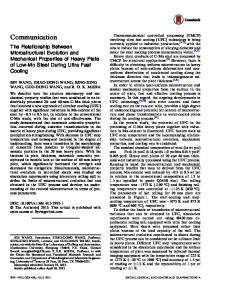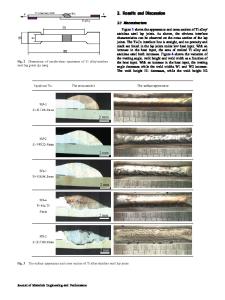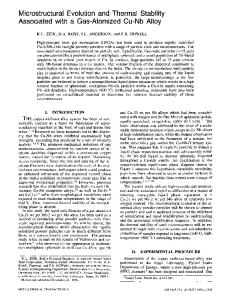Microstructural Evolution and Mechanical Properties of Ultrafine-Grained Ferritic-Martensitic Steel During Thermal Aging
- PDF / 4,050,822 Bytes
- 15 Pages / 593.972 x 792 pts Page_size
- 100 Downloads / 444 Views
2 wt pct Cr ferritic-martensitic steels are initially developed for application in fossil power plant due to their high thermal conductivity, low thermal expansion and less susceptible to thermal fatigue,[1] and then selected for the usage in nuclear reactor since 1970s because of their excellent swelling resistance.[2] Meeting the challenges driven by the next-generation advanced nuclear energy systems, reduced-activation ferritic-martensitic steels with enhanced radioactive decay characteristics such as 9Cr2WVTa, F82H and Eurofer97 are developed by substituting the radiologically undesirable Mo, Nb and Ni with W, V, Ta and Mn in 9Cr-1Mo steel.[3–5] In spite of their attractive properties, ferritic-martensitic steels would suffer from an obvious reduction in strength during application above 823 K. SHENGHU CHEN and LIJIAN RONG are with CAS Key Laboratory of Nuclear Materials and Safety Assessment, Institute of Metal Research, Chinese Academy of Sciences, 72 Wenhua Road, Shenyang 110016, P.R. China. Contact e-mail: [email protected] XIAOJIE JIN is with Chinalco Materials Application Research Institute Co., Ltd, Suzhou Branch, Suzhou 215026, P.R. China. Manuscript submitted May 18, 2020.
METALLURGICAL AND MATERIALS TRANSACTIONS A
Ferritic-martensitic steels are usually characterized by the tempered martensitic structure, consisting of a high density of tangled dislocations within laths and dispersion of carbides along boundaries and within ferritic matrix.[6–12] Therefore, solid solution hardening of Mo and W, precipitation hardening of M23C6 and MX, dislocation hardening and subgrain hardening are responsible for the strengthening mechanisms of ferritic-martensitic steels. However, microstructure after austenitizing and tempering is thermodynamically unstable, and would gradually tend toward equilibrium state during thermal aging or creep test at the operating temperature of 773 K to 923 K. The accompanying microstructural evolutions involve annihilation of dislocations, coarsening of carbides and migration of subgrain boundaries, leading to the breakdown of strengthening effects. A sharp reduction in dislocation density was found during thermal aging or creep, revealing that dislocation hardening could not effectively contribute to strength after long-term exposure.[13–16] Carbide coarsening which reduced the Orowan stress was one of the important degradation processes, and the coarsening rate of MX carbonitrides was found to be much slower than that of M23C6 carbides through experimental and modeling studies.[17–23] Meanwhile, carbides could provide an effective
stabilization of subgrain structure by exerting pinning forces.[24] M23C6 carbides were reported to play a more important role than MX carbonitrides for control of subgrain coarsening.[25–27] Nevertheless, gradual coarsening of M23C6 carbides would reduce the pinning forces on subgrain boundaries, and gave rise to subgrain coarsening, which was another important degradation process.[28–31] Based on the above analysis, carbide stabilized subgrain strengtheni
Data Loading...











